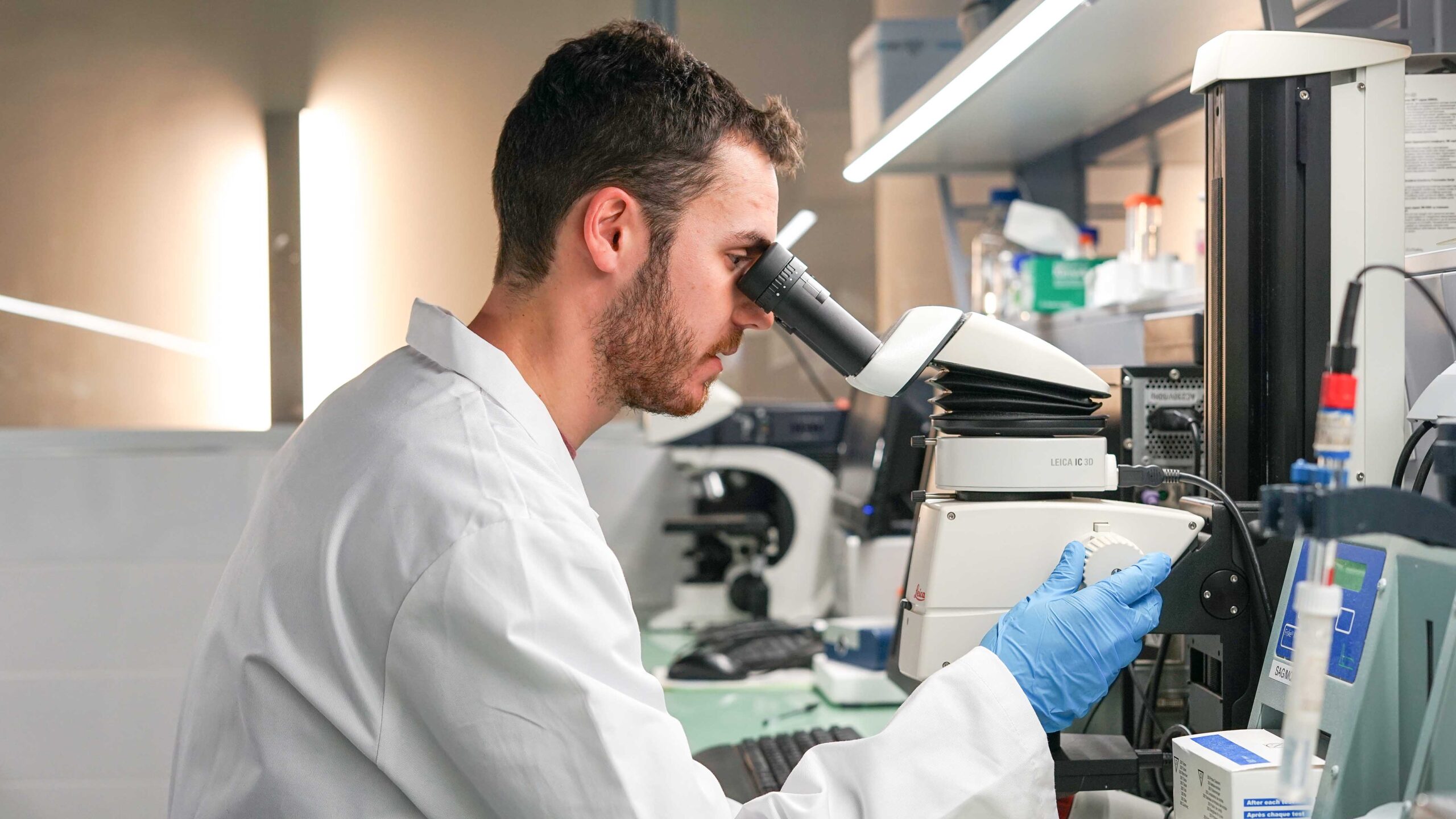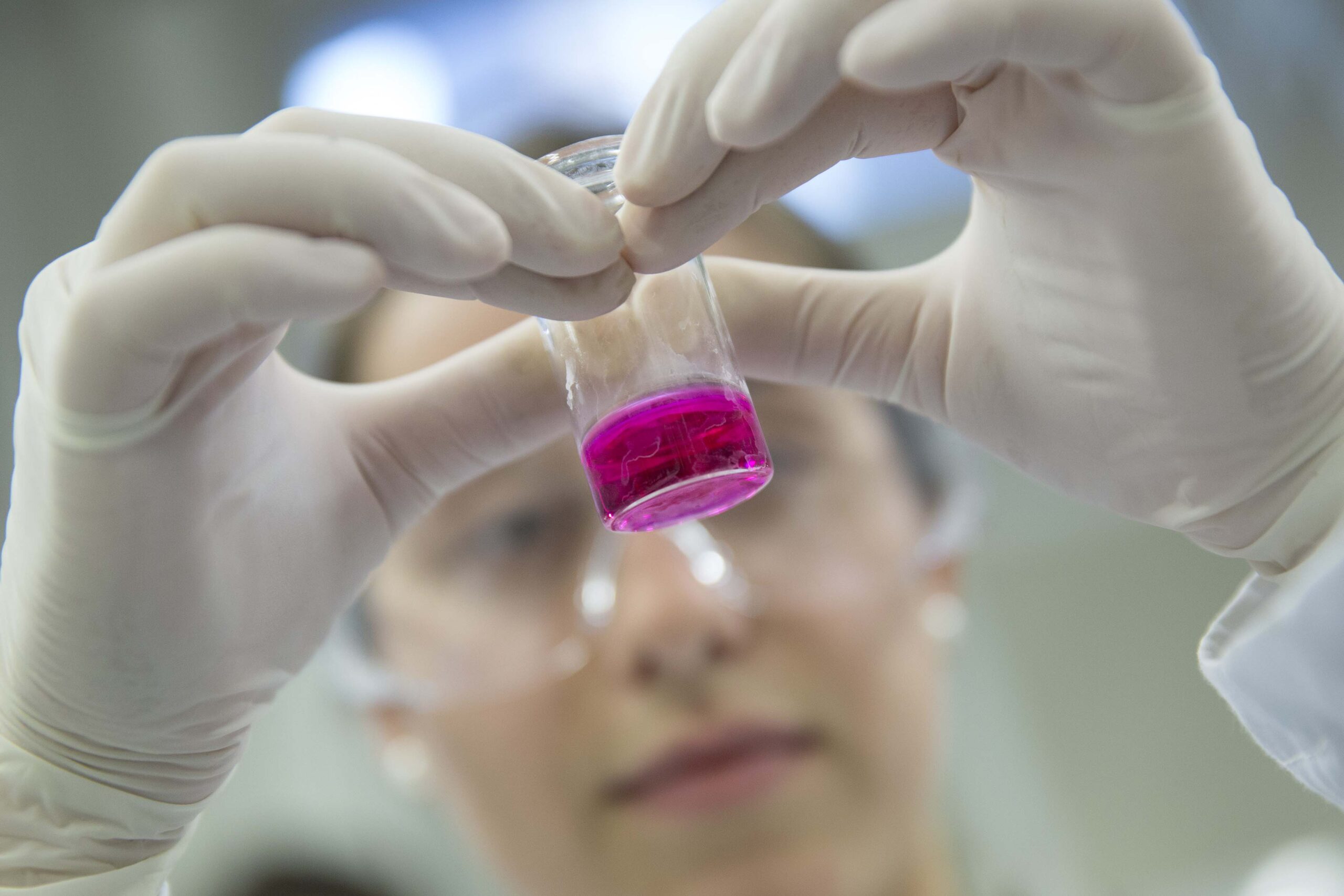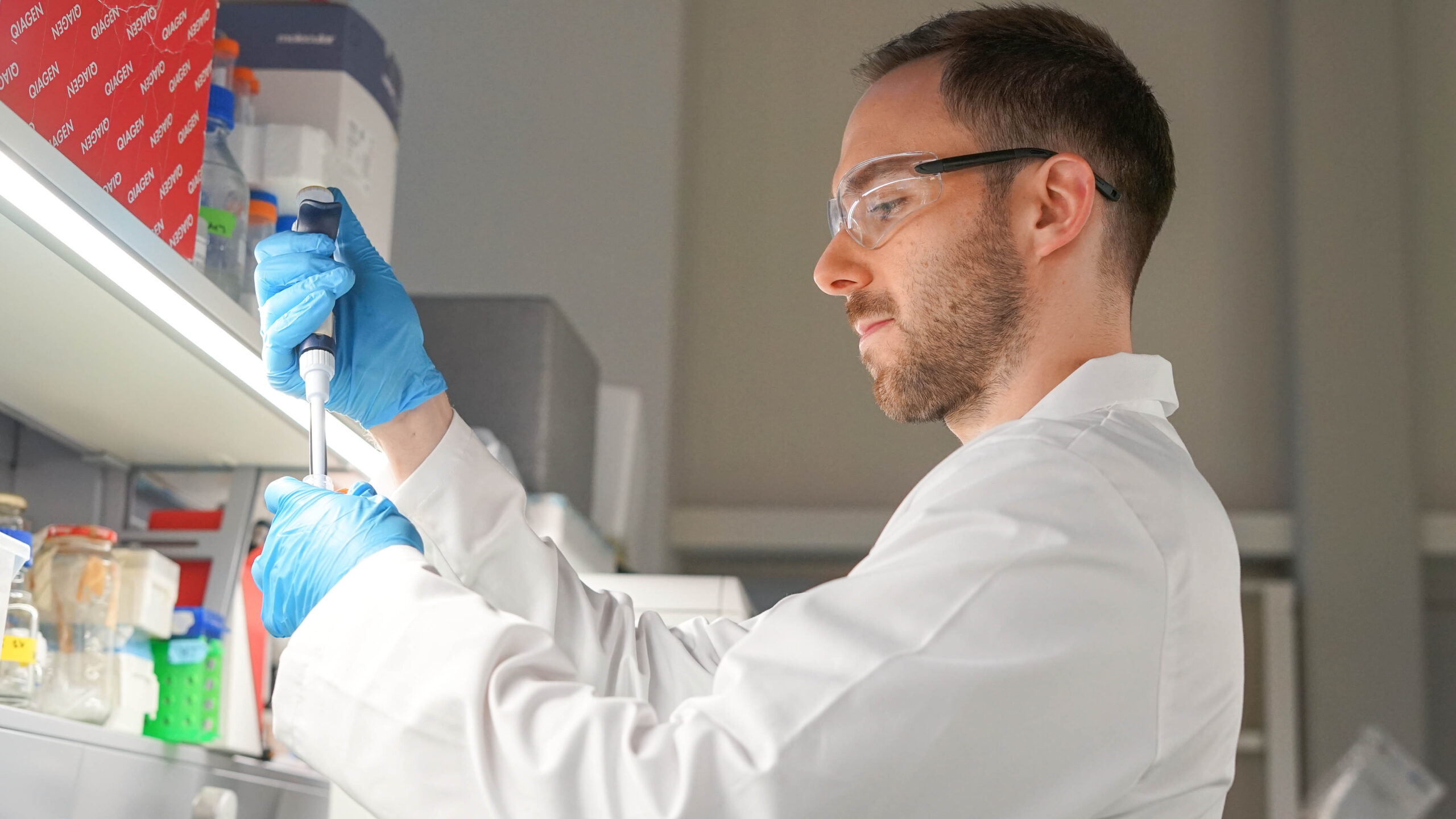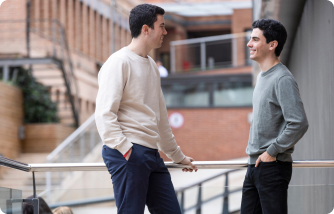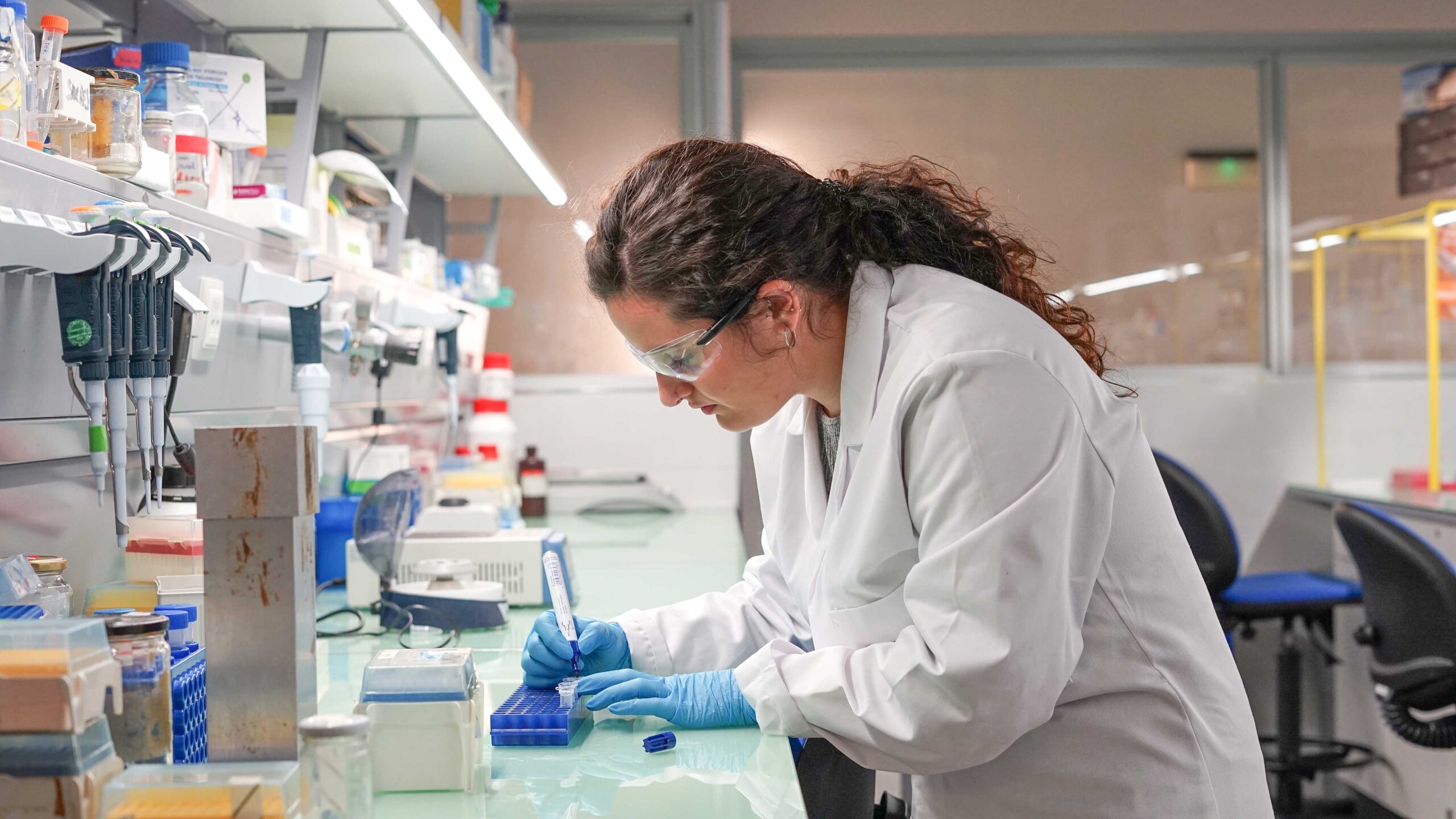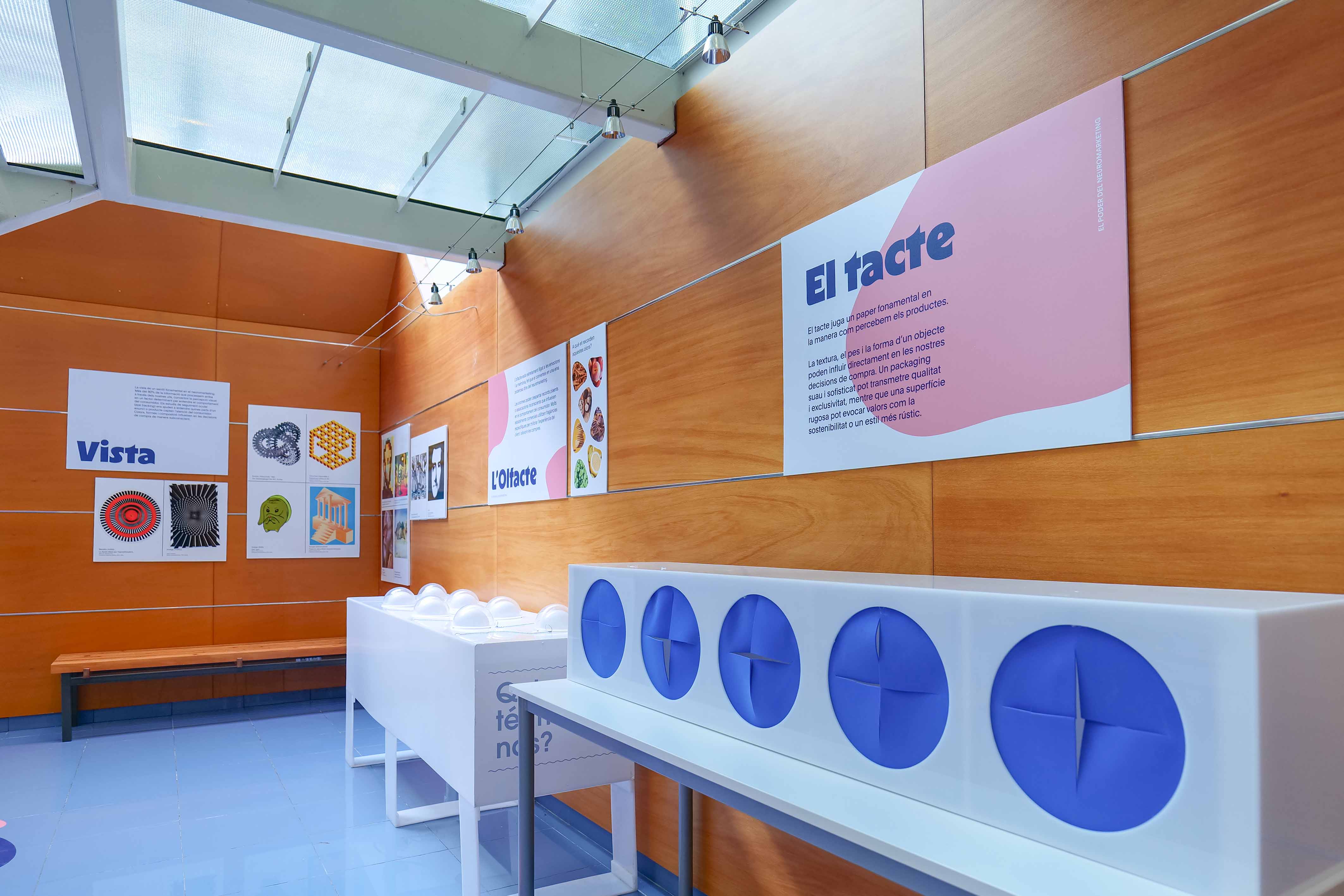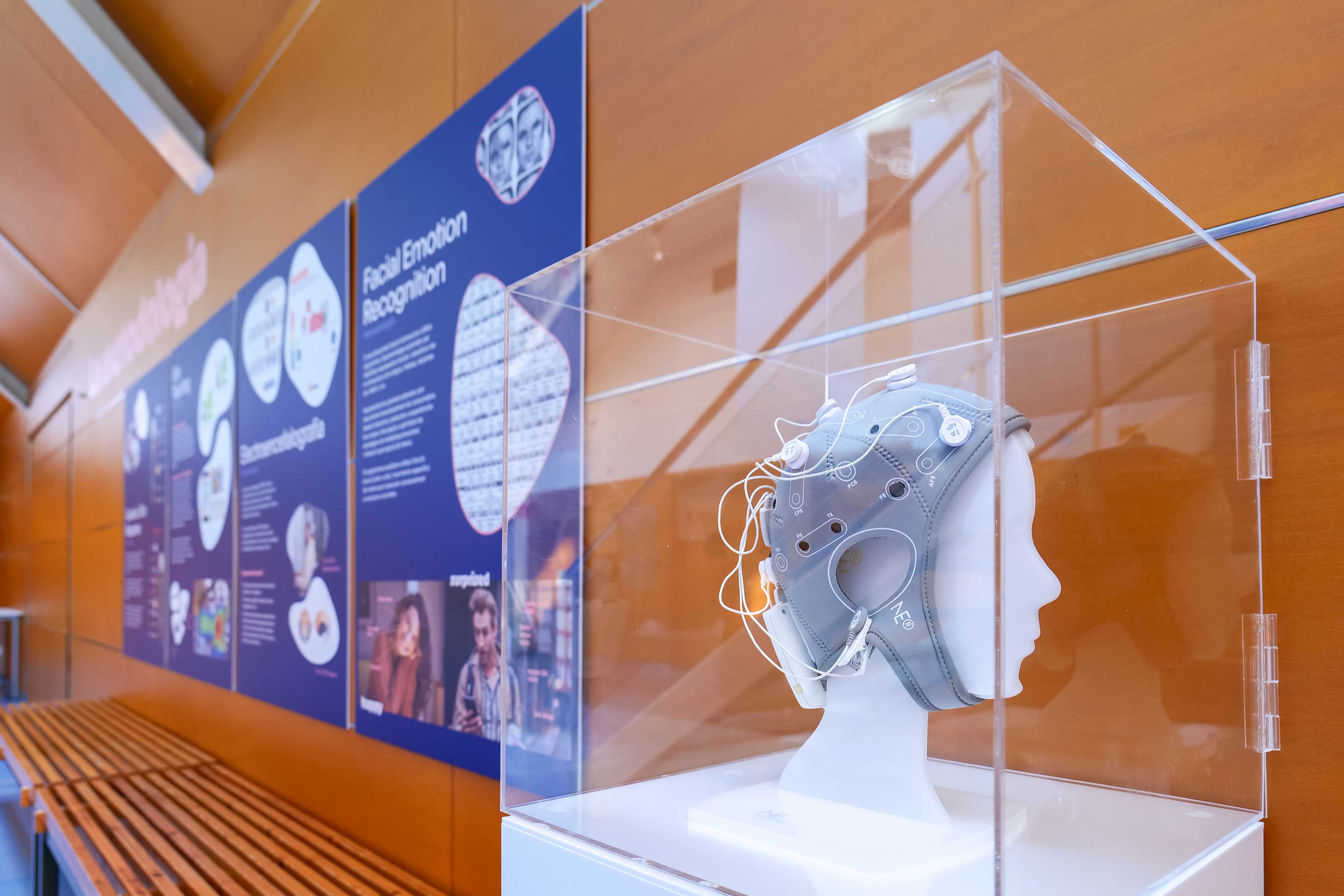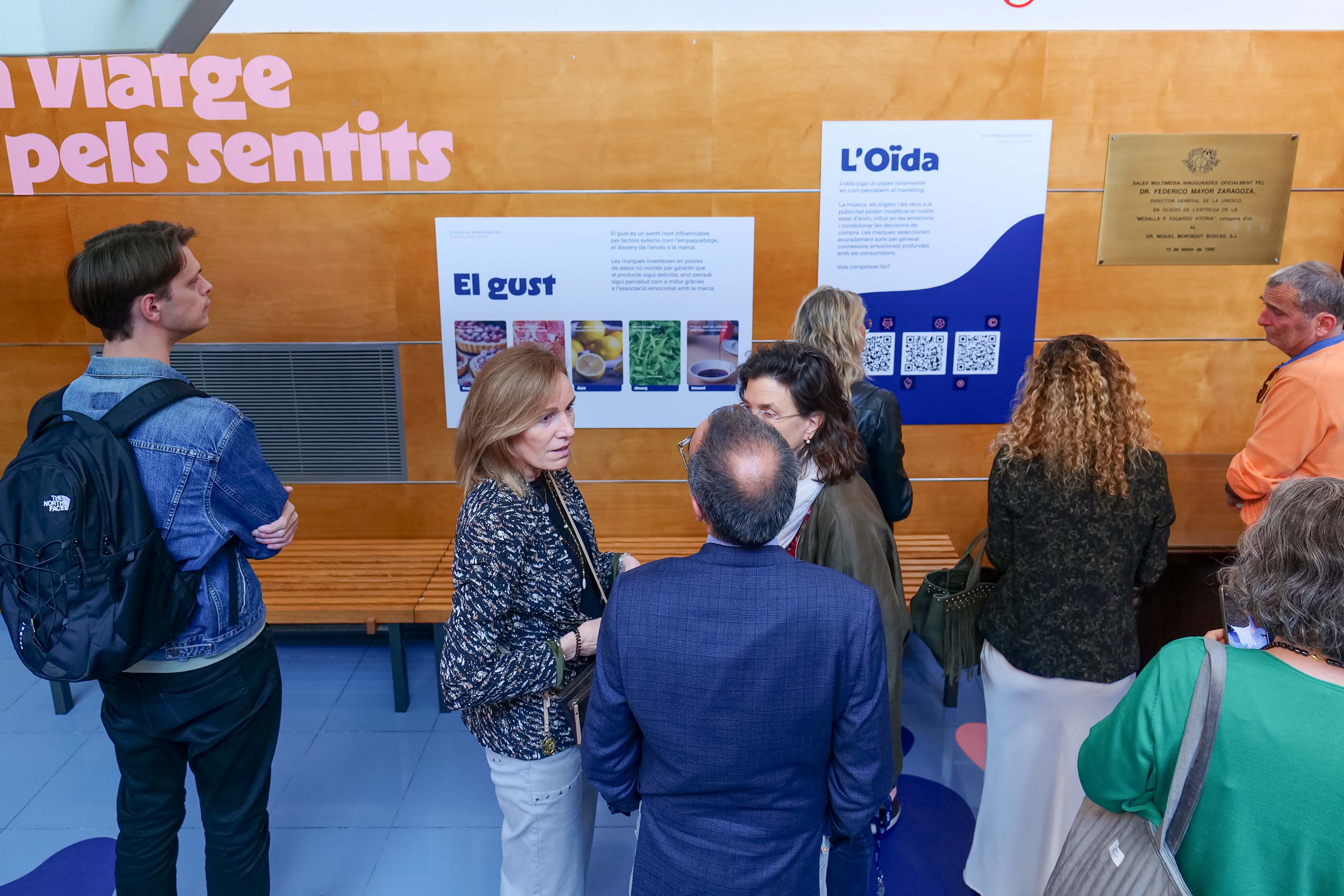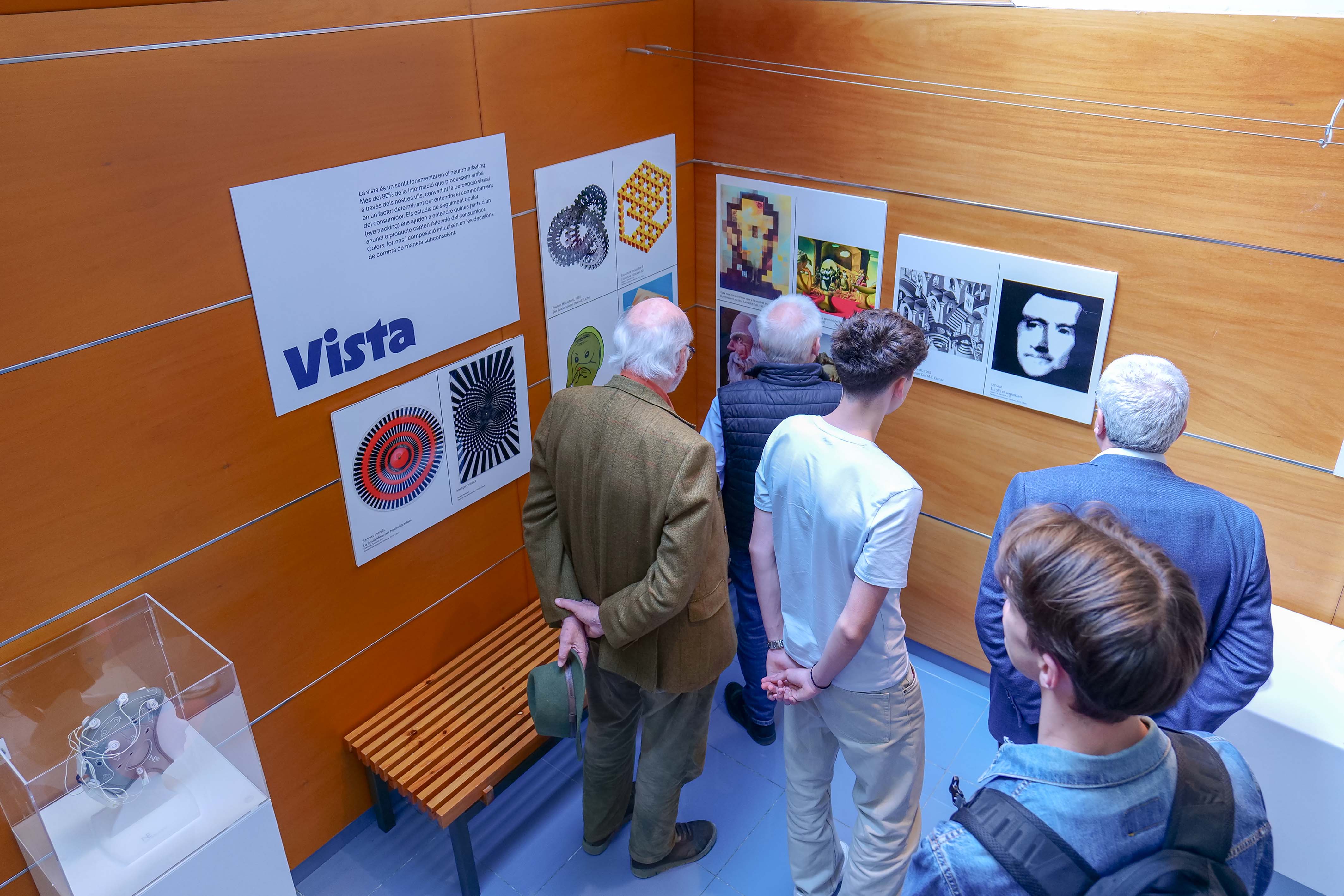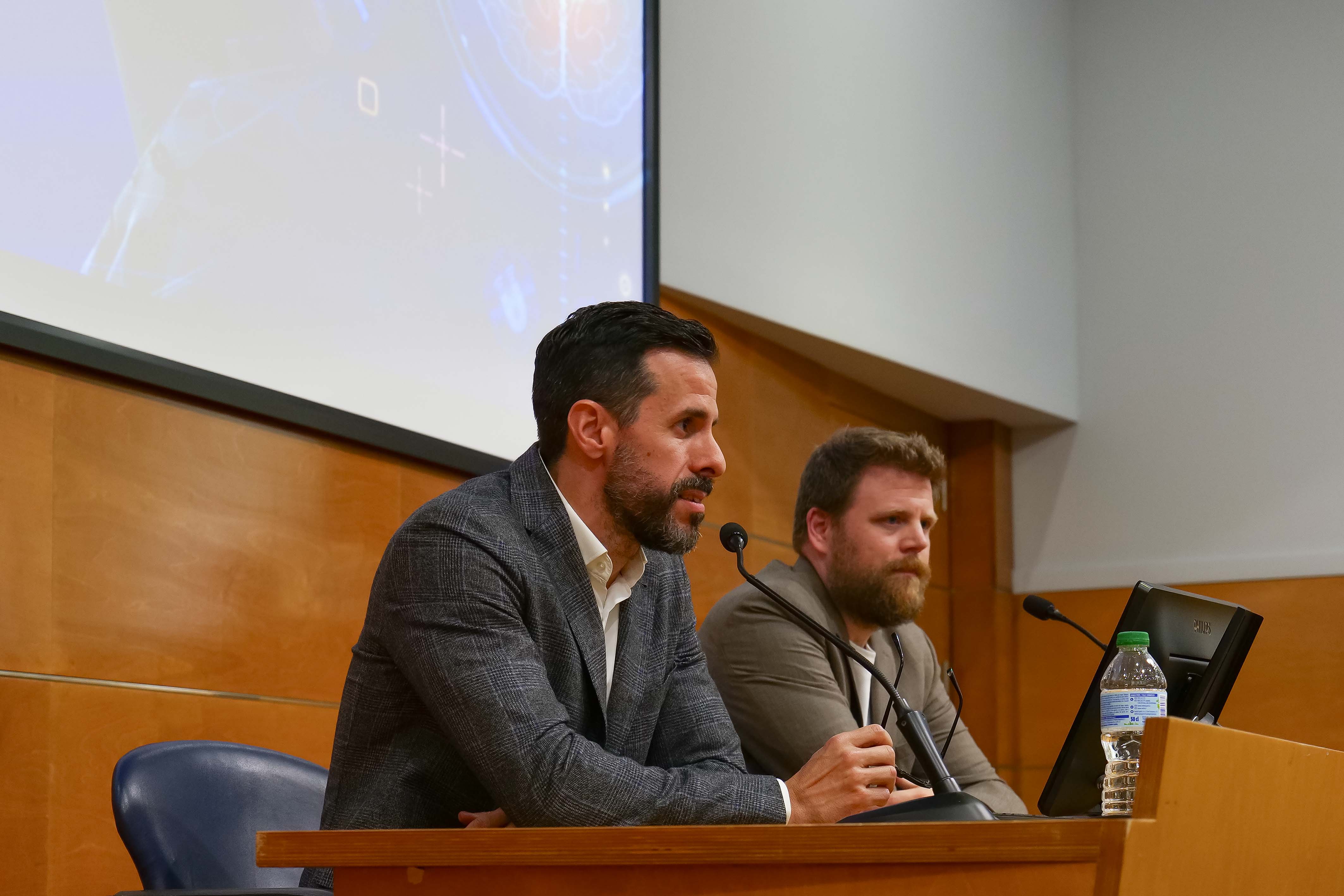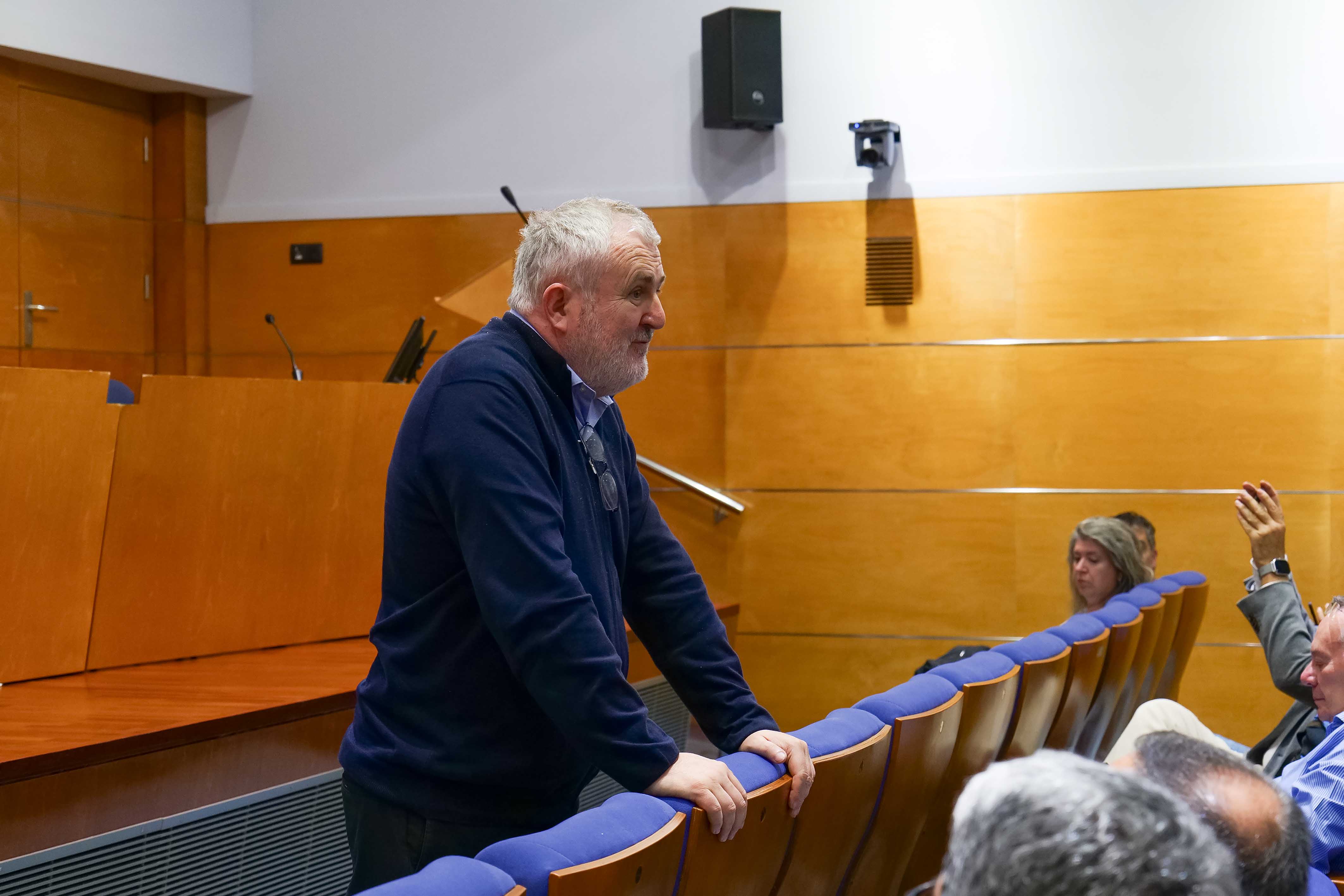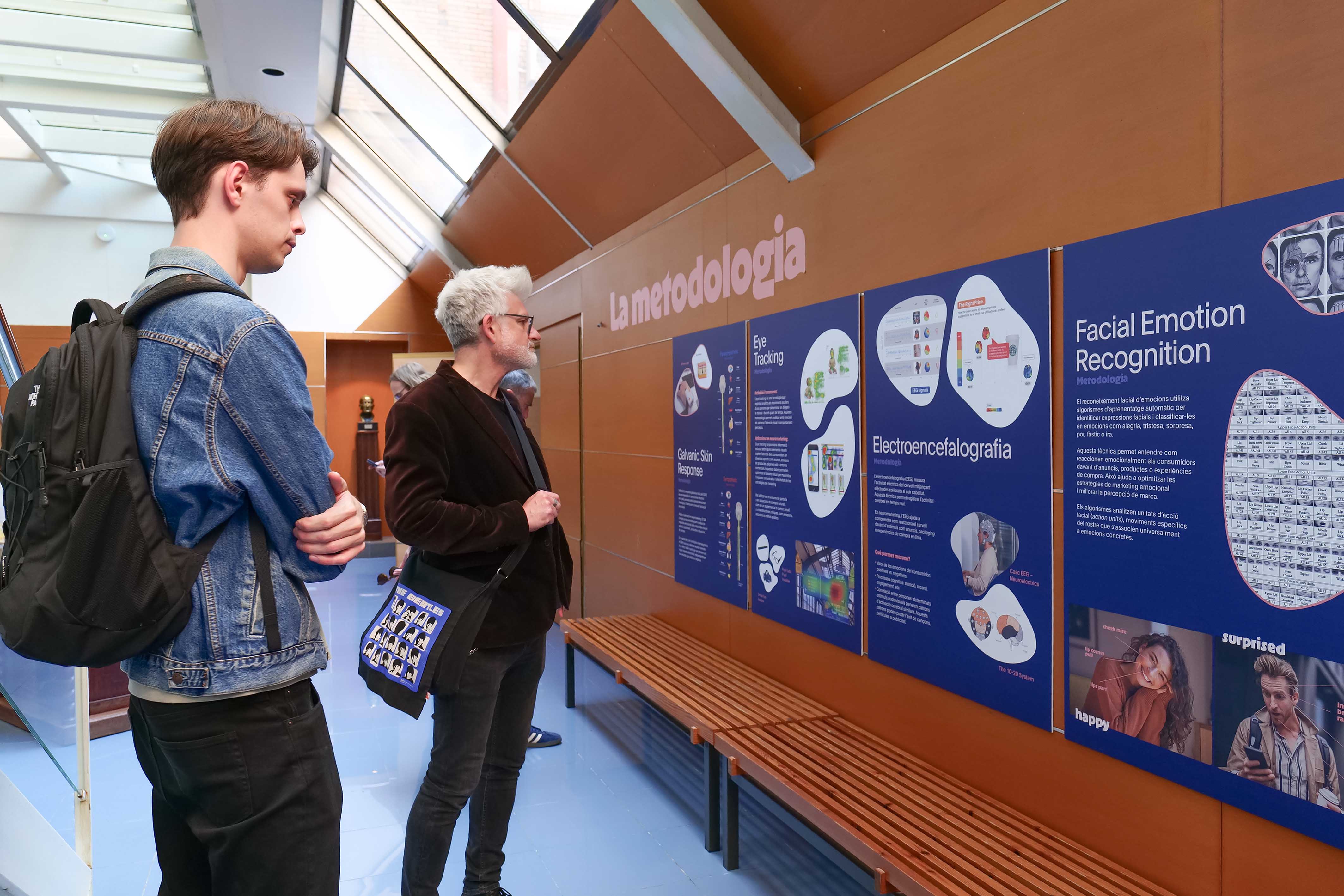How does the brain decide a person’s favourite brand? What emotions does an advertisement trigger? Why do some scents make us buy more? These questions and many others are answered in the new exhibition inaugurated on 15 May by IQS-URL. This interactive and educational exhibition allows visitors to discover how neuromarketing combines neuroscience, emotions, and technology to analyse (and optimize) consumer experience.
The power of neuromarketing: IQS inaugurates an exhibition connecting science, the brain, and consumption
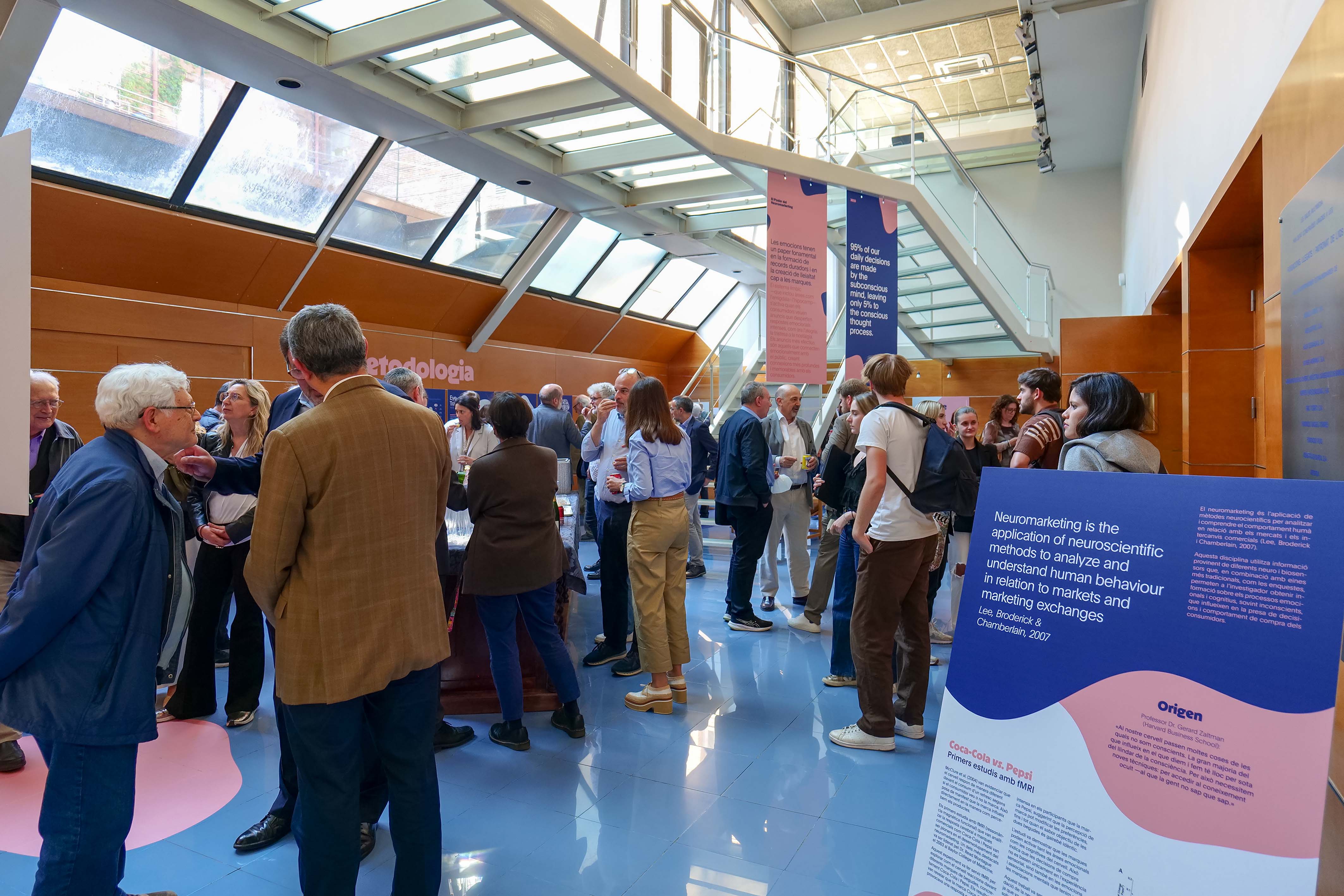
Dr Salvador Borrós, Director of IQS, attended the official inauguration of the exhibition and Dr Jan-Hinrich Meyer and Dr Jorge Matute, professors and directors of the Neuro & Digital Marketing Lab, gave the welcome speech. “In a world saturated with stimuli, understanding how consumers’ minds work can be a new competitive advantage,” explained Matute. He added: “Neuromarketing is not simply a strategy focused on selling more. It can help consumers make less impulsive and more responsible decisions that produce greater social value.”
An exhibition for seeing, smelling, touching, listening, and understanding
The exhibition is divided into two large blocks and a final section: an area dedicated to scientific methodologies and another focused on the senses and their impact on purchasing decisions.
The first section presents the main neuroscientific measurement tools used in neuromarketing today. It explains how facial emotion recognition (FER) analyses facial microexpressions to identify states such as joy, fear, or anger. Real electroencephalography (EEG) devices are shown, which make it possible to record electrical activity from the brain in real time, revealing different levels of attention, memory, or engagement. Galvanic skin response (GSR) is also highlighted, which detects emotional intensity through changes in dermal conductivity. Finally, eye trackingmakes it possible to know exactly which visual elements get the most attention in an advertisement, packaging, or physical store. All of the above is illustrated with visual materials, brain maps, and examples extracted from real research.
The second part of the exhibition is dedicated to the five senses – sight, hearing, taste, smell, and touch – and their direct influence on brand perception. It highlights how more than 80% of the information we process comes to us via sight, which makes visual design a determining factor in attracting attention and eliciting emotional responses. Hearing also plays a key role: sounds, voices, and advertising jingles can alter our mood and generate affective links with a brand. Taste is explored as a tool for loyalty: brands conduct tastings so flavours are not only pleasant, but also memorable. As to smell, the exhibition highlights how this sense is most connected with emotional memory, and that certain aromas can evoke experiences or create a desire to buy subconsciously. Finally, it addresses how touch influences the perception of a product’s quality and sustainability through the texture, weight, or shape of the packaging.
The exhibition concludes with a final part in which some fun facts are presented that include practical applications of neuromarketing and consumer neuroscience with real business examples. Some of these findings derive from different experimental studies carried out in the Neuro & Digital Marketing Lab at IQS as a result of scientific studies or partnerships with different companies.
A laboratory dedicated to research, teaching, and business
The exhibition was created within the framework of the activities promoted by the Neuro & Digital Marketing Lab at IQS, a pioneering laboratory in Spain that combines academic research with the practical applications of neuromarketing. Equipped with state-of-the-art technology such as EEG, GSR, eye tracking, and facial analysis, the laboratory makes it possible to scientifically measure consumer reactions in real time. From advertising campaigns to packaging and digital or physical experiences, this space represents a bridge between behavioural science and strategic decision-making for real companies. In addition, it is an active learning environment for students in the IQS Master’s Degree in Neuromarketing, a pioneering degree in this field.
One of the most striking spaces in the exhibition compiles surprising data and real applications of neuromarketing. For example, it highlights how 95% of our daily decisions are made subconsciously, and that it is possible to predict the success of movies, songs, or advertising campaigns by analysing brain activity. It also presents studies that explain how fear of missing out (FOMO) can influence investment in NFTs, or how brands such as Apple and Coca-Cola activate areas of the brain that are different from those of their competitors. Even consumer prejudices and stereotypes are analysed based on their reactions to certain advertisements.
The exhibition has been made possible thanks to support from various partnerships. The company Neuroelectrics has donated one of its EEG helmets to show how brain activity is measured in real time. Givaudan has contributed to the creation of the olfactory experience that forms part of the tour. We would also like to thank Dr Pere Navalles, director of the Master’s Degree in Neuromarketing at IQS, for his involvement and our special appreciation for his technical assistance and providing materials.
